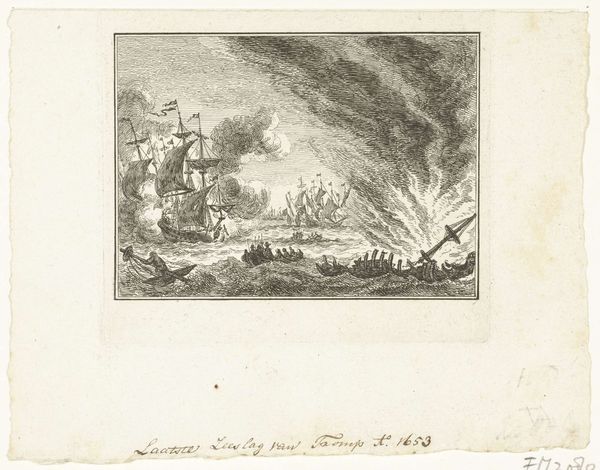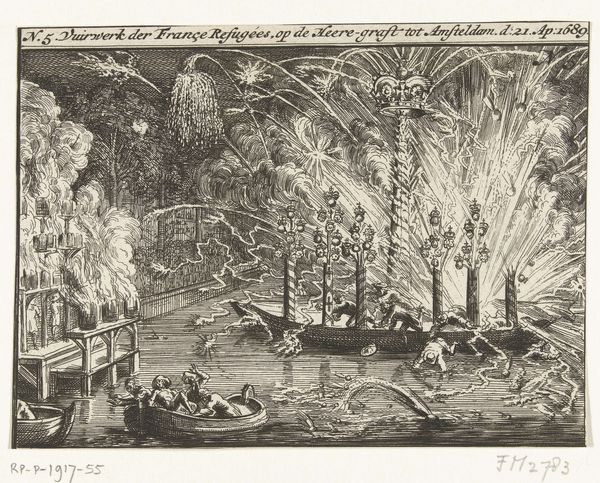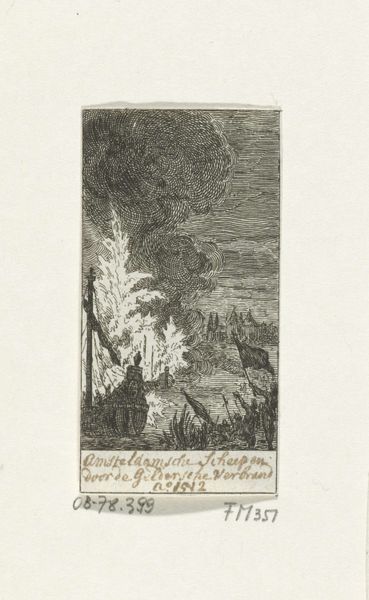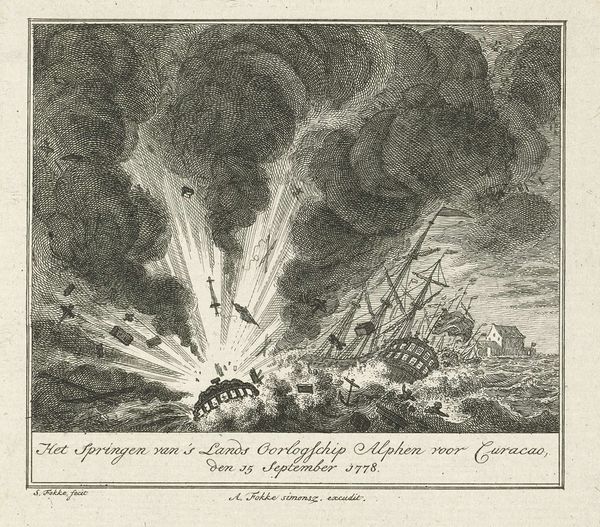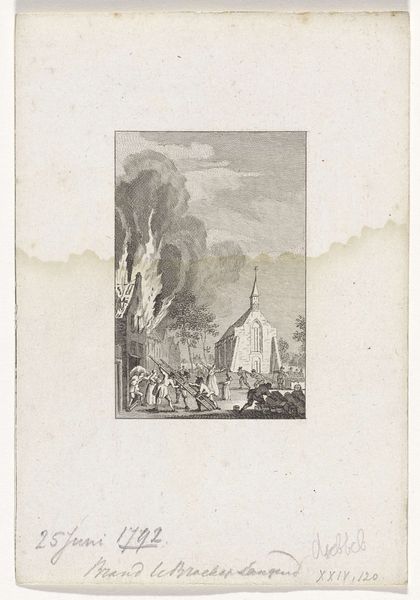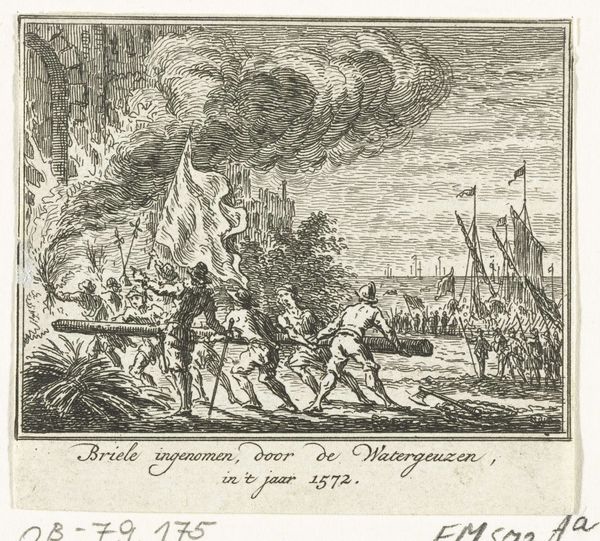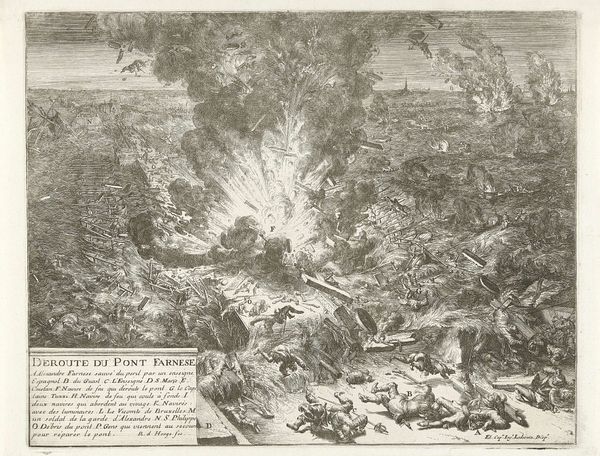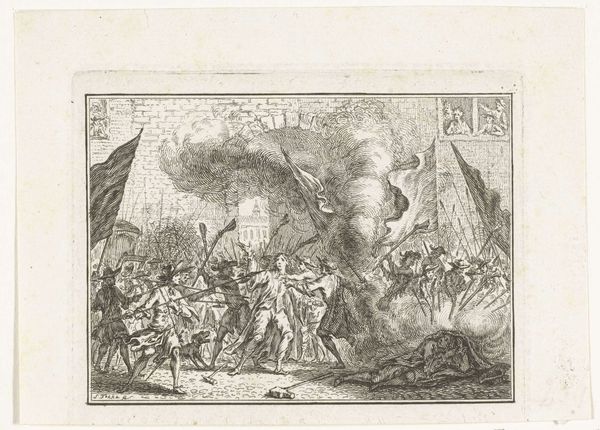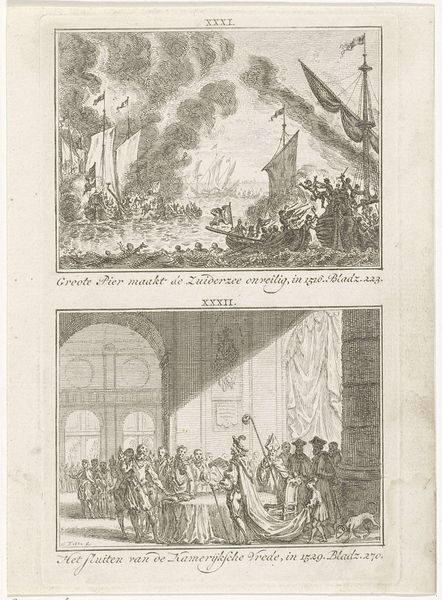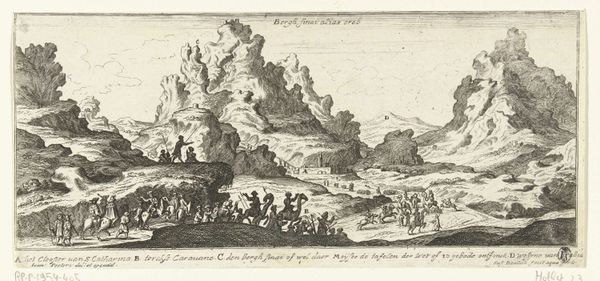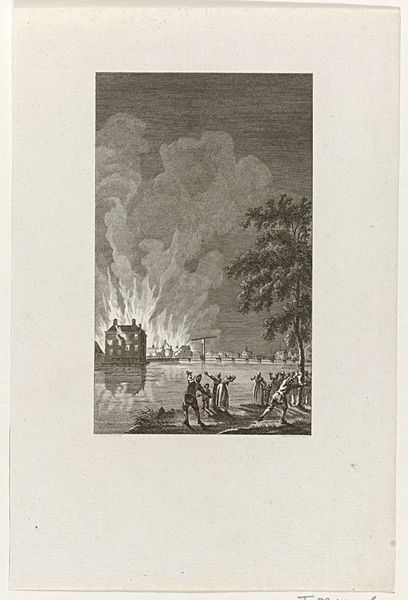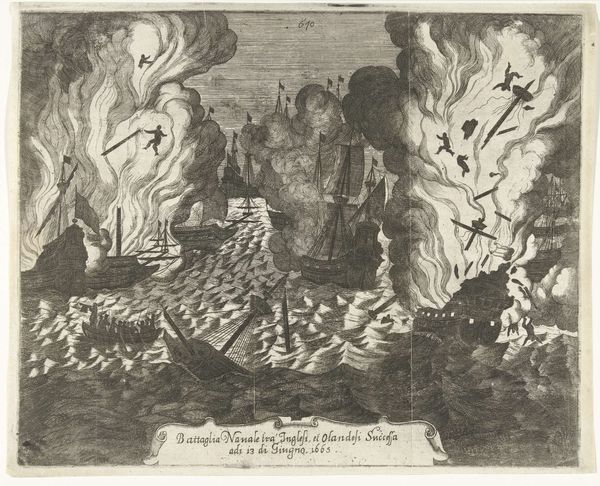
Dimensions: height 111 mm, width 60 mm
Copyright: Rijks Museum: Open Domain
Curator: Talk about a visual drama! Simon Fokke created this etching, "Zeeslag bij Kaap la Hogue, 1692," sometime between 1779 and 1781. Editor: Oh, my goodness. Even in this small print, I feel overwhelmed. It’s chaos, but a compelling chaos. A ship aflame, tiny boats fleeing... a swirl of smoke dominates the composition. I’m sensing a violent but strangely romantic energy here. Curator: Right? Fokke masterfully captures a key naval engagement. You feel the heat of the moment. It’s a classic historical scene depicted with baroque flair. Consider the use of etching: fine, dense lines create this incredible sense of depth and swirling motion in the smoke. Editor: The smoke, it's almost a character, swallowing everything. Smoke is always an indicator of change... the burning ship perhaps representing an old order going up in flames, being replaced by something new, the victor being reborn from these very flames! A total power play depicted as visual storytelling. Curator: That's a beautiful reading, layering historical and cultural meaning. I think Fokke emphasizes Dutch naval power in particular. The Dutch fleet played a crucial role in this victory against the French, securing maritime dominance. Editor: Absolutely! Symbolism, in old battle scenes like this is seldom accidental. There are little details to be observed in naval flags, weaponry, cloud density - or what might be sea foam, and even figures within ships fleeing or conquering that may offer additional nuance. You mentioned baroque earlier, but I also wonder how much influence there may have been on this through the Romantic movement, beginning only a few years before the etching’s creation. Curator: It really captures a pivotal historical event, doesn't it? Editor: It is very thought provoking! It's a moment of transformation preserved in ink... almost as if victory can only rise from destruction.
Comments
No comments
Be the first to comment and join the conversation on the ultimate creative platform.

